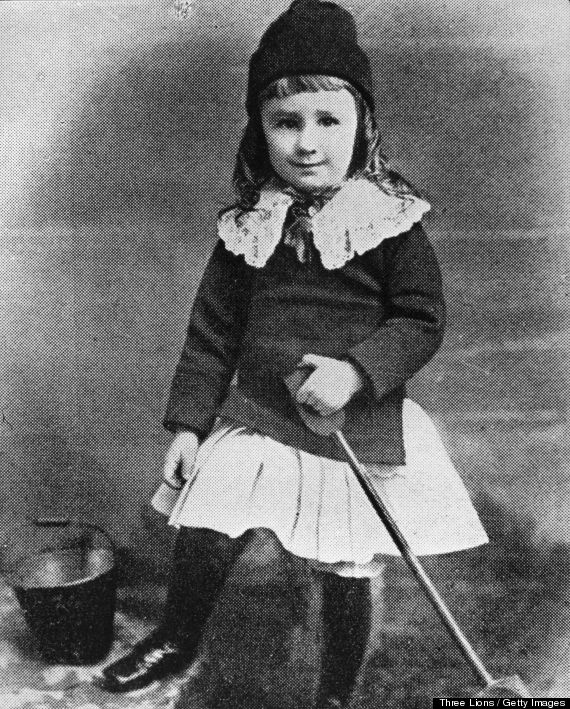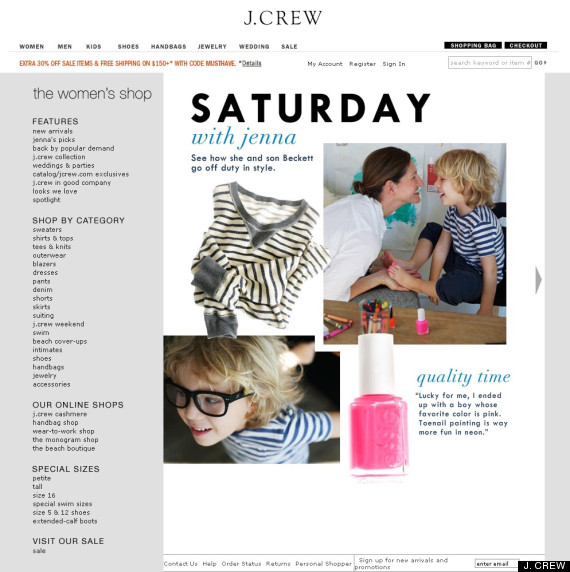
Written by Kyle Wiley for The Good Men Project
I’ve always considered myself a pretty progressive dad, riding the wave of modernity in the 21st century. In our household, the lines of the past that steadfastly identified what was considered “male” and “female” responsibilities were more opaque and everything from diaper changing, feeding, paying bills and getting up late at night to tend to a baby is divided based on whoever’s hand is on deck at any given time. It’s not the easiest job in the world, but to be honest I felt pretty good about being what most people would label a “modern dad” and I wore that title like a badge of honor.
My title was put to the test, however, the day my wife brought this home for my son:

The first thing I said to my wife was: “Um…that can’t be for my son. That thing is wearing a skirt.”
“So?”
“Well, skirts are for girls, and he’s a boy so we have to return it for a monkey with a pair of jeans or something.”
My wife rolled her eyes, calmly asserted that I was being silly and eventually the toy was given to my son. That little hula monkey ended up being one of his favorite toys as an infant and I realized that I indeed was making a big deal out of nothing.
Fast forward to his toddler stage:
My son was asked what his favorite color was and he emphatically replied that it was pink. Deep down his answer made me a bit uncomfortable, but I didn’t show it; I gave him a hug and let him know how awesome his selection was.
But why did I have that reaction? What the hell was I afraid of?
Well for starters, pink is a girl color. It’s not just a girl color, but the international spokescolor (yes, a made-up word) for the female gender. You see it on every dress, tutu and Barbie convertible that is marketed towards little girls. So how could it be that my son, who loves to collect bugs, do karate and play with race cars, would actually like something that is so obviously … “girly”?
When I was a kid, if you were a boy who admitted you were a fan of pink, you’d instantly be labeled a sissy and be ridiculed by every bully in a three-classroom radius. I suppose my fear stemmed from a misguided desire to protect him from that kind of scrutiny. (I also believe that it is more frowned upon for little boys to stray from gender expectations than it is for girls. But that's subject matter for another post.)
After some reflection however, I began to understand that the issue was not with him liking this color, but with the fact that I had a problem with it at all. I realized that maybe I’m not as much of a forward-thinking father as I had thought. Maybe I’m just as guilty of the same male chauvinistic stereotypes that were the norm during my father’s generation and the generation before his.
After I accepted this reality, I then decided to explore these feelings in order to understand, then overcome them. And so began my journey ...
So, who decided that pink was a girl color anyway? I did a little research.

When you look at the above picture, what do you see? If you said girl, you're wrong. Not only is this frilly youngster a boy, he is none other than Franklin D. Roosevelt, one of the greatest U.S. presidents. This picture, which was taken in 1885, is a reflection of the views of that time period. It was actually pretty typical for both boys and girls to wear dresses in their early childhood. By age 7, boys would finally start wearing pants and would get their first haircut.
According to an article posted on the Smithsonian website, in the early 1900s pink was considered the primary color for boys and blue was for girls. With the women’s liberation movement in the 1960s, gender-neutral clothing became the norm. It remained that way until the mid-1980s, when more and more parents were finding out their baby's gender through prenatal testing. Child and infant clothing retailers capitalized on this trend and began to shift their products and advertising campaigns toward gender-specific colors.
The cycle is perpetuated, and we as parents and as a society tend to push these ideas onto our children.
So basically, the wool was systematically pulled over my eyes to believe pink is a color exclusively for the female sex from the moment I arrived on this Earth.
But there’s evidence of the tide beginning to change.
This picture of a mother and son with pink painted toenails was taken for the 2011 J.Crew Spring catalog, and caused quite the controversy, but it is also an indicator that the mainstream is once again evolving and pushing boundaries.
The picture didn’t bother me at all. I figured, whatever that little boy’s parents choose to do with their child is their business. But then one day I came home from work to a giggling wife. Perplexed, I asked her what was up. She sheepishly opened up her phone and showed me this picture:

Apparently, he saw mommy painting her nails and thought it would be cool to copy her. He then grabbed his marker and proceeded to color his toes. My wife thought it was hilarious. I’m ashamed to say that I blew it out of proportion and was pretty upset. I considered scolding him or at least explaining why what he did was wrong. Thankfully my wife brought me back down to Earth, just like with the hula monkey situation, and reminded me that I was being ridiculous. He was only a toddler. It has been about a year since that ordeal; he has never brought it up or attempted to do such a thing again.
So going through all of this, what lessons have I learned?
I’ve learned that by understanding the stereotypes that were taught to me in my youth, I can be more open-minded as a father. All that matters is the fact that I love my son and as his father, it is my job to ensure he is raised in an environment where he feels safe to express himself. And that includes him deciding to like pink, purple, blue or any other color he so wishes. Or if he ever wanted to try on his mommy’s shoes. Or any other thing that someone might consider “girly.” I will almost bet you that in the eyes of a child, most activities that we as adults tend to categorize as appropriate for one gender or the other seem completely natural to them.
Plus, who knows? Maybe in 50 years, pink will be the “it” color for boys once again.
More from The Good Men Project:

